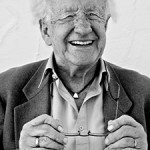The Sunni-Shia conflict: Any solution?
By Johan Galtung
Kuala Lumpur
Islam, Christianity and Buddhism are religious cultural powers, deep, defining the ends and means of human lives. All three promise life after death – eternal salvation in paradise, eternal dissolution in nirvana – if rules are observed. Unlike Judaism and Hinduism, all three are universal, for all humans at all times. So, they caught on across faultlines, way beyond Arabia, Palestine, Nepal-India into other, even enemy, economic-political-military realities.
Arabia was Muslim; Islam expanded from Iberia to Delhi by 1192. Palestine became Muslim-Jewish; Christianity became the religion of the Roman Empire in 313; from 395 divided into Orthodox East and Catholic West, from around 1500 divided into Catholic South and Protestant North. Casteless Buddhism was evicted from Hindu Nepal-India to neighbors; a thousand years later it is rooted all over East Asia.
Three religions became three civilizations of three vast regions. Three successes? Yes, but at a price. The price was schisms inside all three, faultlines with hatred, violence, wars. What went wrong?
Economic-political-military faultlines generated schisms in the culture: We want our own Christianity-Buddhism-Islam!
Expanding Vietnam-China-Japan needed a we-culture mahayana Buddhism and not a Sri Lankan individualizing “little wagon” hinayana.
Europe transalpina, north of the Alps, did not want rule by Rome, and Martin Luther produced their Christianity in 95 theses in 31 October 1517, defended in detail in Augsburg in 1530: God is his own cause, causa sui, deciding salvation by His Grace, not steered by works, merits.
And Islam, in the Greek-Turkish-Persian, later Orthodox-Ottoman-Sassanid empires war zone, split into Sunni vs Shia Islam in the struggle over successor, caliph, when Mohammed died in 632: Abu Bakr by shura, election, or Ali, the nephew, by blood. The dividing line, like Alps for Christianity, was the Arab-Persian Gulf, continued North.
Even if the major trust in the split came from the economic-political-military divisions, the causation was circular, making the divisions long-lasting, deep. Not a clash of civilizations, but clashes within civilizations. Tragic for the strong peace messages in Buddhism, then Islam, then Christianity: they should have given rise to three vast peace regions where Buddhists do not kill Buddhists and Christians not Christians, and Muslims not Muslims.
We got Vietnamese as tools of French colonialism in Cambodia, Phnom Penh, and Khmer Rouge atrocities basically directed against that; we get Japanese with Buddhism as strong civilization factor attacking China with the same. Yet nothing relative to Christian Europe: Thirty years war 1618-48 between the two Christianities in the West; the Napoleonic, First, Second “world” (mainly Europe) wars, the Cold War and today’s confrontation over Ukraine enacting the schism between the Western and Eastern Churches. Tragic.
A key Mongolian Buddhist said, Buddhayana, not Hinayana-Mahayana. Not yet. The Westphalia “peace” after 30 years barbarism was only passive coexistence, and between only two Christianities.
An effort was made to go beyond. They met in symbolic Augsburg in 1999 on the symbolic date of 31 October, and issued a declaration [i]:
– “Together we confess: By Grace alone, in faith in God’s saving work and not because of any merit on our part, we are accepted by God and receive the Holy Spirit, who renews our hearts while equipping and calling us to good works.”
The outer human acts and the inner human believes; works and faith, in one person. The Declaration puts together what the schism split; a torn conflict basis with a split theology super-structure. But the basis changed; EU-NATO economic-political-military integration changed that, and paved the way for the Declaration. Also for Islam?
Sunni-Shia. Trying to understand the justifications on both sides, this outsider came to the following three conclusions:
• Nothing Qur’anic seems unequivocally favoring one or the other;
• Maybe the Prophet had not made up his mind or was of two minds. One reason: Abu-Bakr was his father-in-law and Ali his son-in-law;
• Abu-Bakr and Ali had a friendly, cooperative relationship.
What emerged was an either-or Islam split with sub-divisions; today strongly pitted against each other over ISIS, Sunni, invoking the Caliphate as institution (the last was Ottoman from the Sultan’s victory over the Mameluks in Egypt in 1517 till the end in 1922; after Sykes-Picot 1916, Balfour 1917, and Allies occupying Istanbul 1918.)
In hindsight the alternatives are clear: a neither-nor favoring the Prophet’s daughter Fatima (his two sons died young); a compromise with two cooperating camps, a both-and with the two joint successors. But patriarchy, the infra-structure, and One Successor ruled them out.
Sooner or later they will yield to a both-and Mohammedia. OIC consists of 57 states with 1,650 million Muslims; 22 states are Arab with 350 million, add Iran and Turkey, but still a very clear majority of states and Muslims are “outside the war zone”. Educated guess: the renewal of Islam, the both Sunni-and Shia may come from further East.
The West and USSR colonized 48 of the 57 states, and by state-building drove a wedge between the Ultimate Ruler and Muslims: emirs, monarchs, presidents, PMs; also found in the Gulf countries. State logic against ummah logic: a Community of Muslims; an archipelago of city-states, sultanates, with millets-autonomies; densely interlocked economically with sharia-compatible Islamic banking?
A family of nations with benevolent guidance, like the Ottoman Empire? A change of infrastructure, as the Islamic part of globalization? An OIC, C as Conference –> Cooperation –> Community, to Union? An Islamic Union?
Drawing on the rich experiences of all Islams, focusing on the best, weeding violent weeds making some Muslims non-Islamic in their recourse to violence; much directed against each other. Time is there to work from both sides, on the basis and the theology, to go beyond.
NOTE:
[i] From Washington Post, November 1, 1999.
Originally published by Transcend Media Service, TMS, here.
